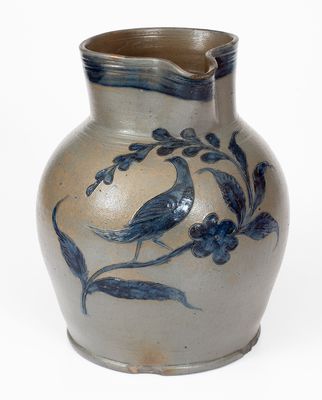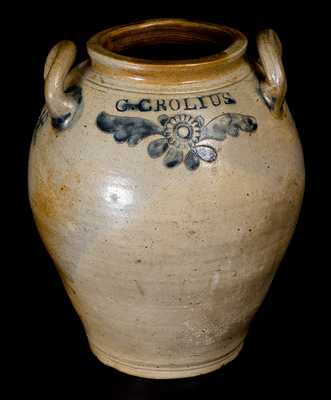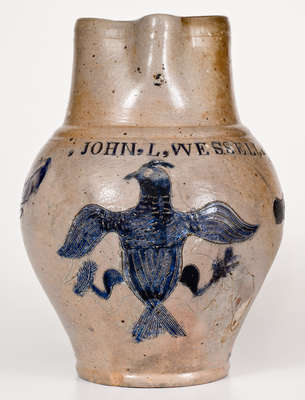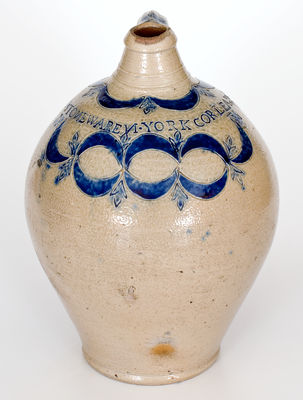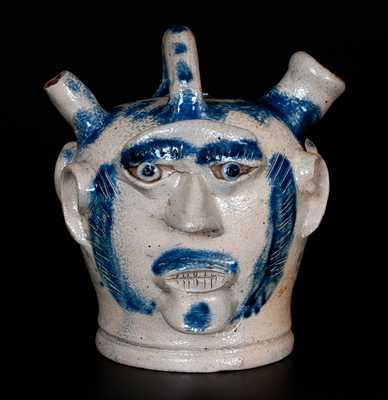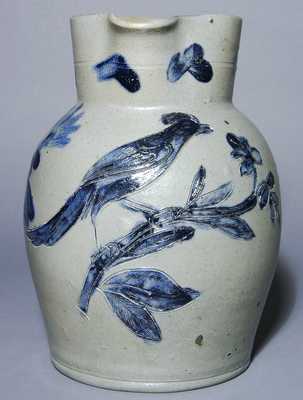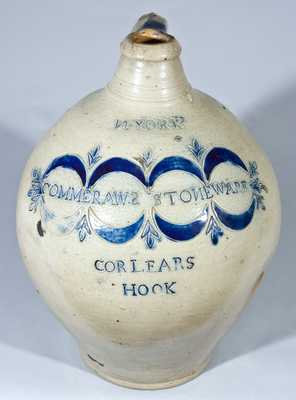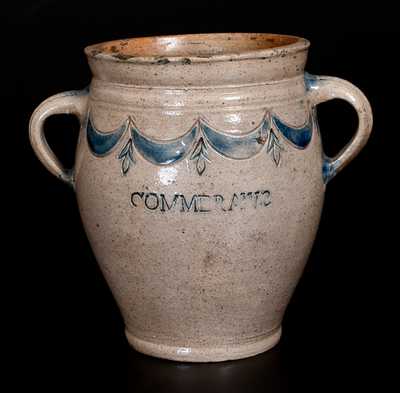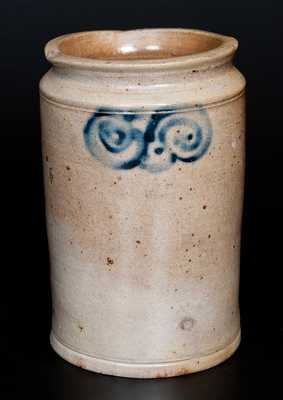Possibly Unique Two-Gallon Stoneware Jar with Cobalt Watchspring and Star Decorations, Stamped "C. CROLIUS / STONEWARE / MANUFACTURER / Manhattan-Wells. / NEW YORK", circa 1810, squat-shaped, ovoid jar with footed base, tooled shoulder, and open loop handles, decorated on the front and reverse with two pairs of brushed watchsprings flanking a star. Brushed cobalt highlights to handle terminals. Impressed with the oval maker's mark of Clarkson Crolius, Sr. at the shoulder. The watchspring motif is considered the earliest standardized cobalt design on American stoneware, most commonly associated with the shop of Captain James Morgan of Cheesequake, New Jersey, circa 1775. It has also been found on pieces made at the Kemple Pottery of Ringoes, NJ, circa 1746-1795, as well on the products of Abraham Mead of Greenwich, CT, circa 1790. Archaeological evidence from Manhattan's African Burial Ground indicates the Crolius family decorated their ware with these distinctive scrolled designs during an early period in the 18th century, possibly predating its employment at sites in neighboring colonies. It could be argued that the Crolius family actually popularized this design in America, introducing to sites in New Jersey. By the turn of the 19th century, however, watchspring motifs were no longer used in Manhattan, discarded for elegant incised designs and brushed cobalt drape decorations. The jar to be auctioned is of great significance to the history of Manhattan ceramics, showing a clear connection to the decorative style of Clarkson Crolius's ancestors, and may have been decorated by either an older family potter who had employed such decorations decades prior, or a potter paying homage to a prevalent eighteenth century local design. One of the most important pieces of Crolius stoneware to come to auction in recent years. Inverted 7 3/4" Y-shaped crack from rim, including a wedge-shaped chip at rim and some shallow chipping along crack. A thin 2" crack on underside, continuing 6" up front of jar. A chip and minor nick to interior of rim. Small, shallow chips to exterior of rim. H 10 1/2".


Click images to enlarge.



